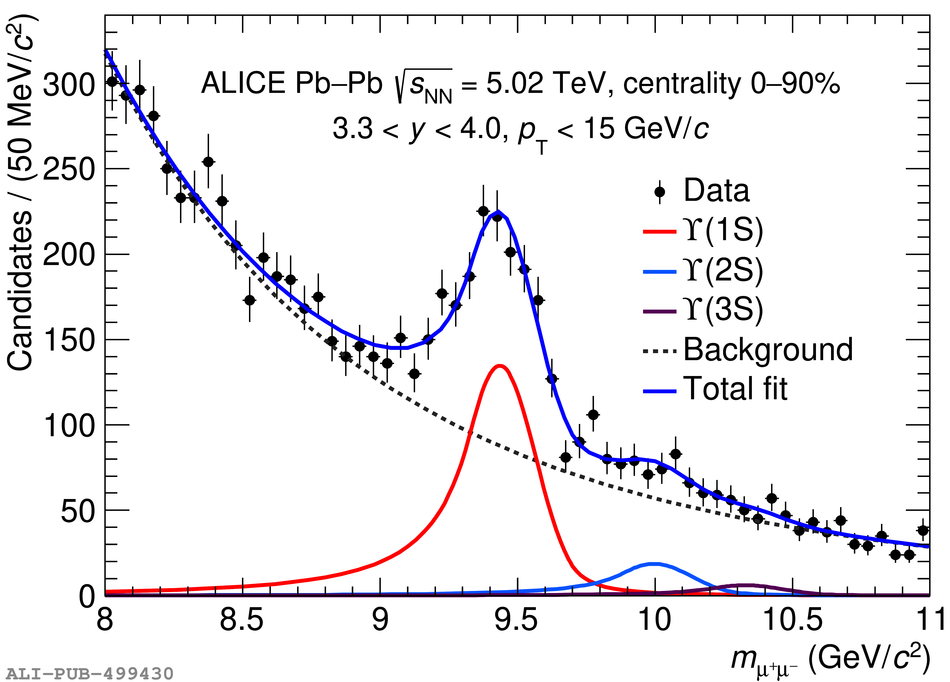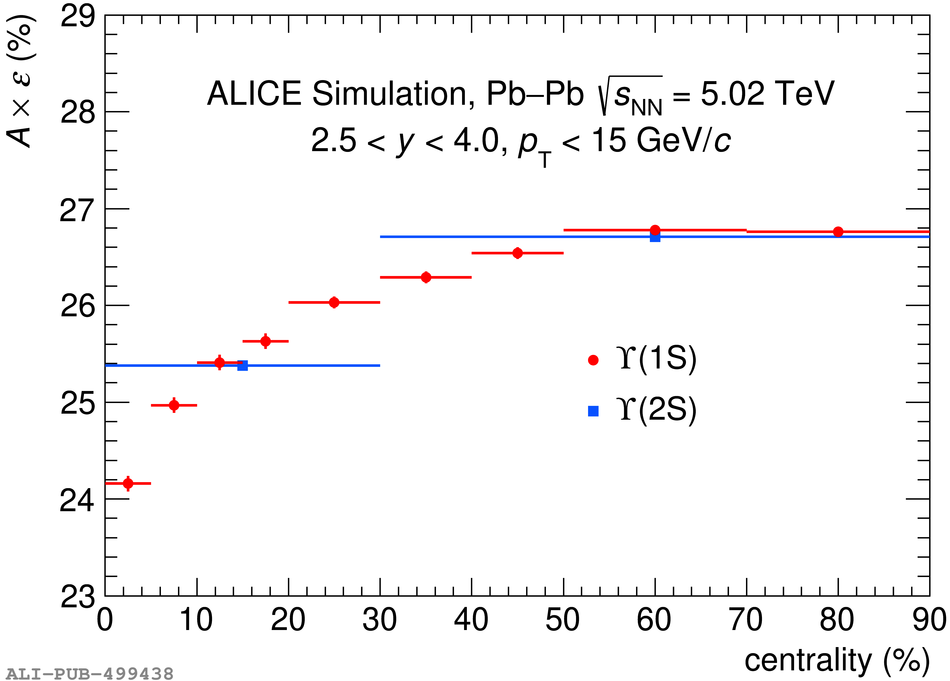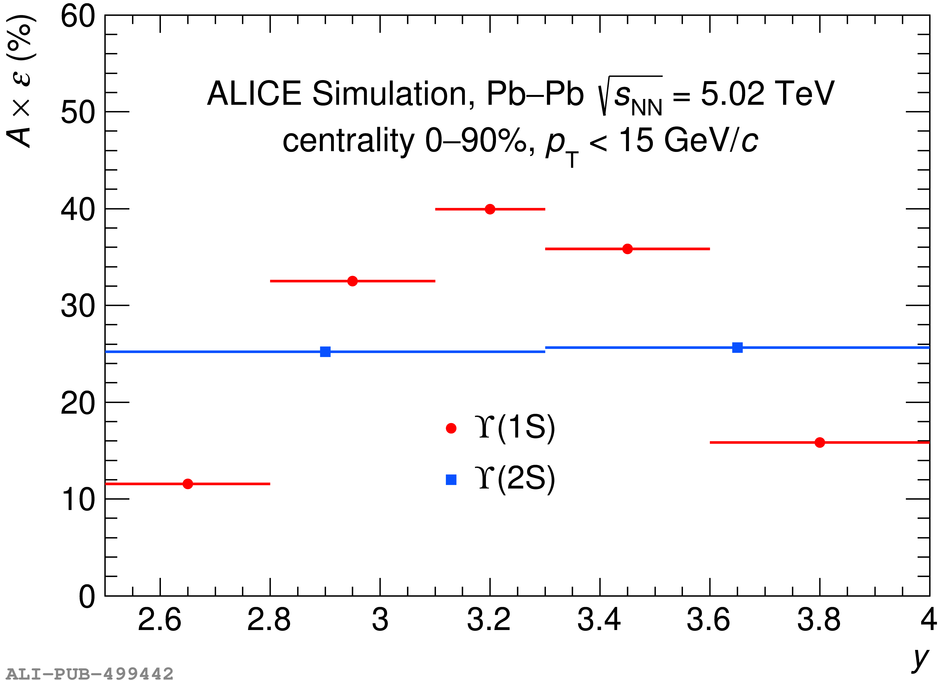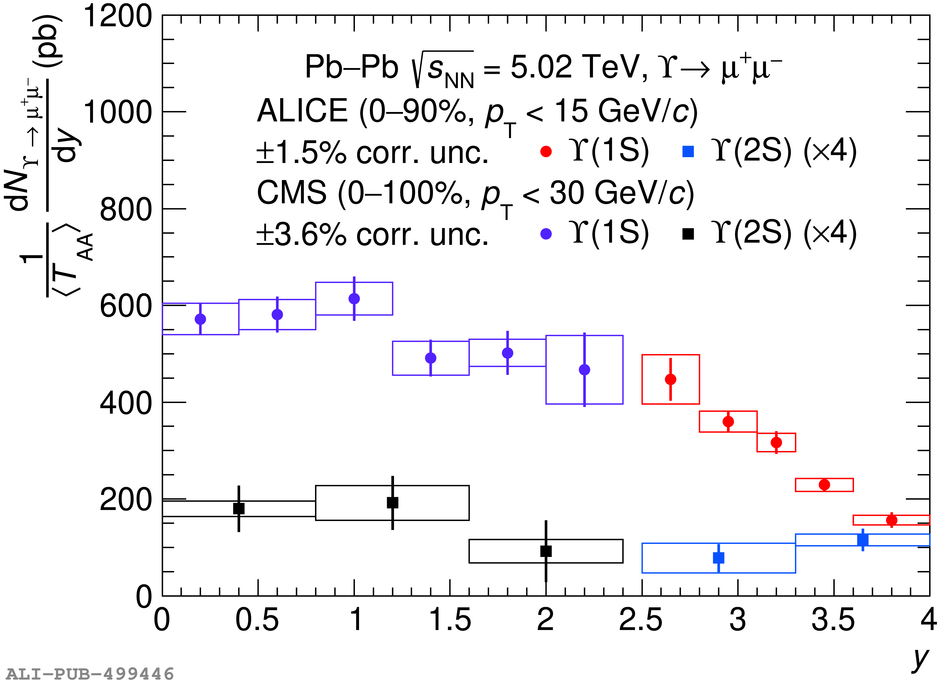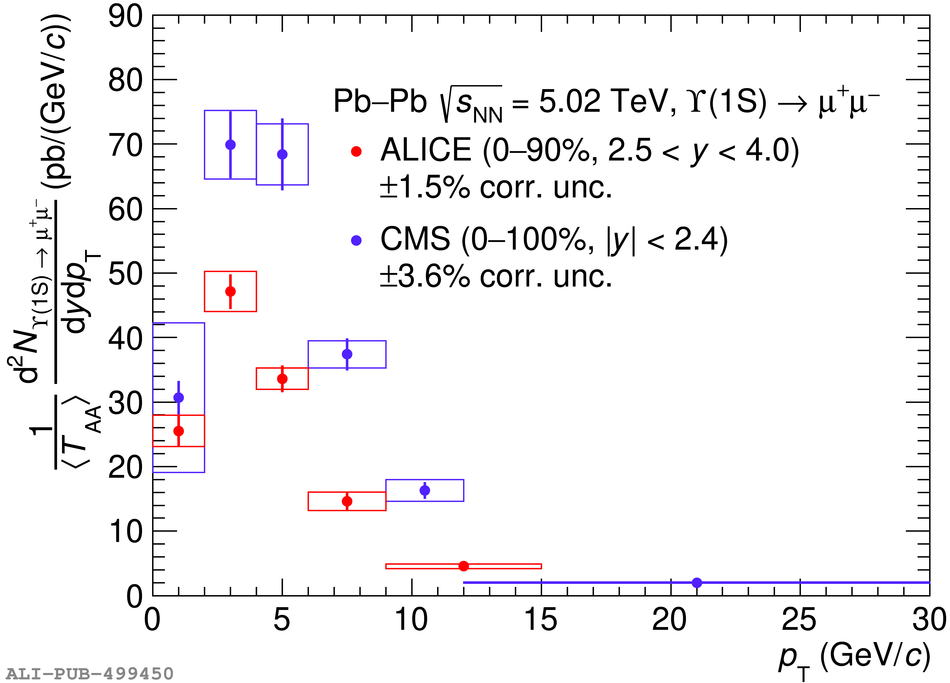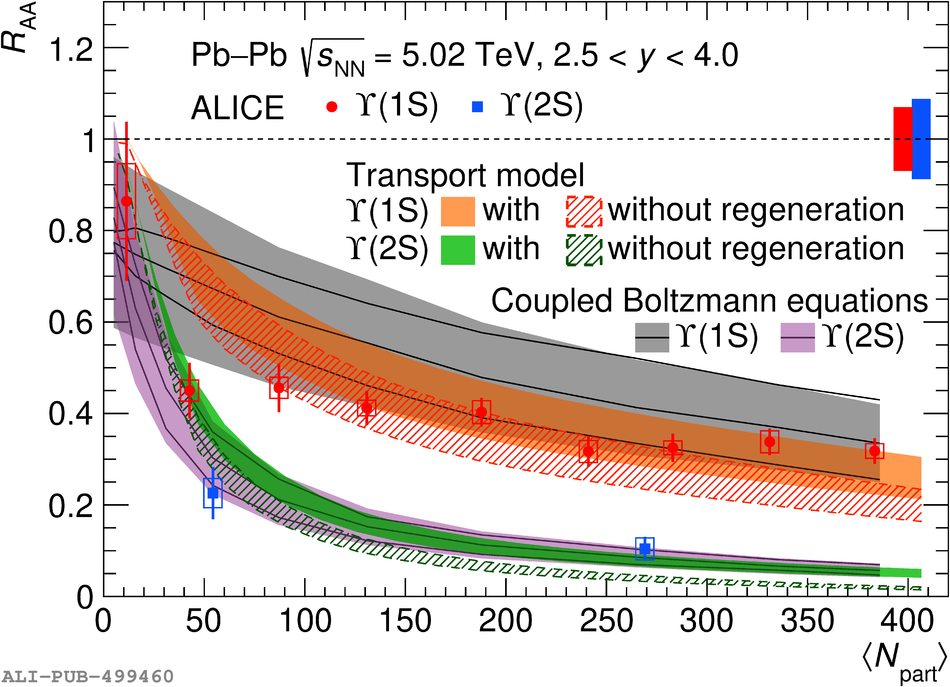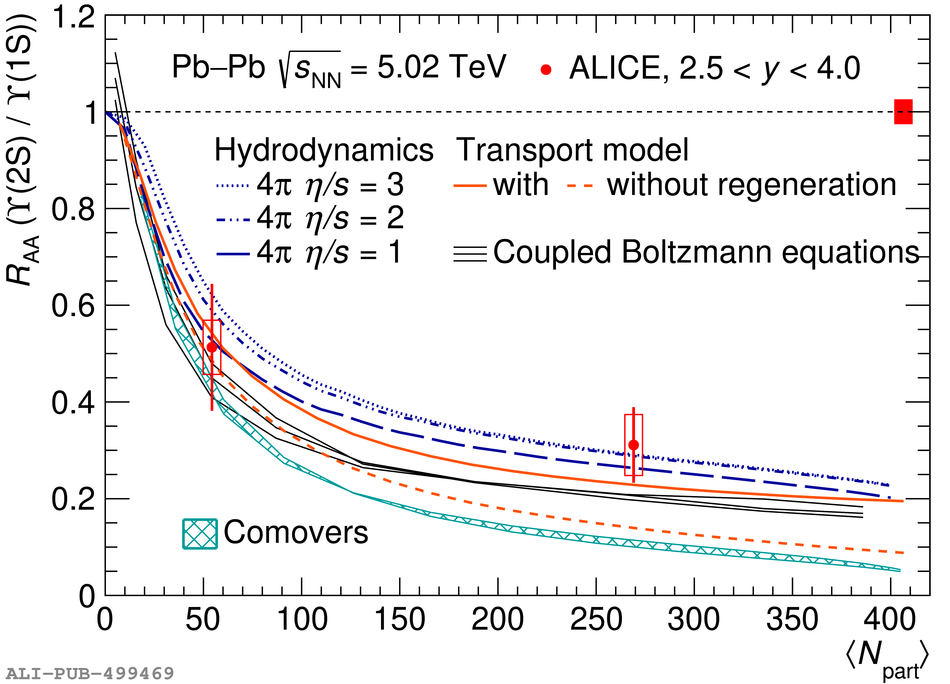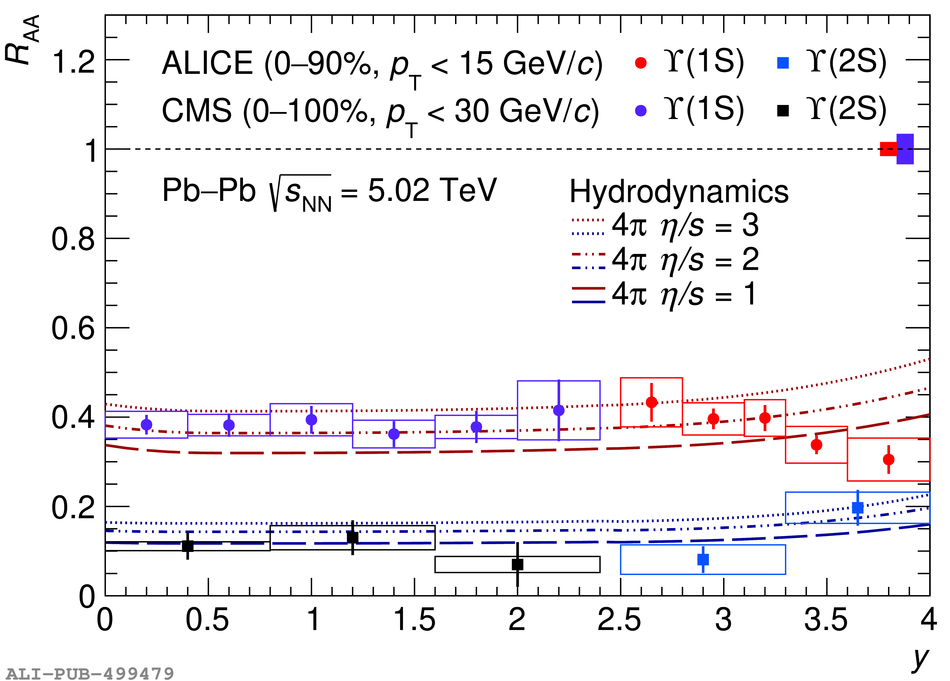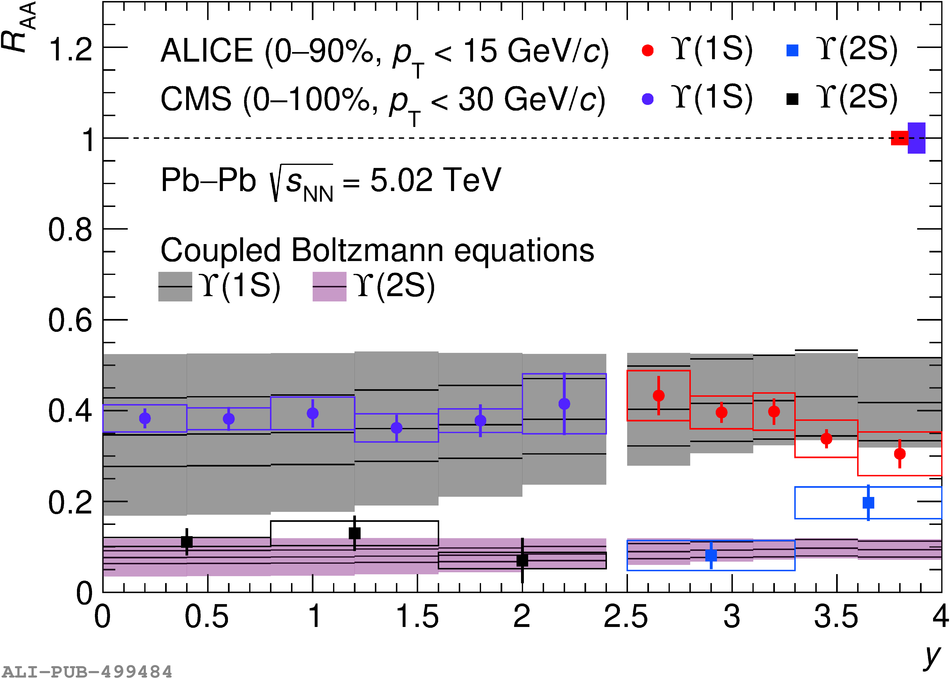The production of $\Upsilon$ mesons in Pb-Pb collisions at a centre-of-mass energy per nucleon pair $\sqrt{s_{\rm NN}}$ = 5 TeV is measured with the muon spectrometer of the ALICE detector at the LHC. The yields as well as the nuclear modification factors are determined in the forward rapidity region $2.5<~y<~4.0$, as a function of rapidity, transverse momentum and collision centrality. The results show that the production of the $\Upsilon$(1S) meson is suppressed by a factor of about three with respect to the production in proton-proton collisions. For the first time, a significant signal for the $\Upsilon$(2S) meson is observed at forward rapidity, indicating a suppression stronger by about a factor 2-3 with respect to the ground state. The measurements are compared with transport, hydrodynamic, comover and statistical hadronisation model calculations.
Phys. Lett. B 822 (2021) 136579
HEP Data
e-Print: arXiv:2011.05758 | PDF | inSPIRE
CERN-EP-2020-207
Figure group

